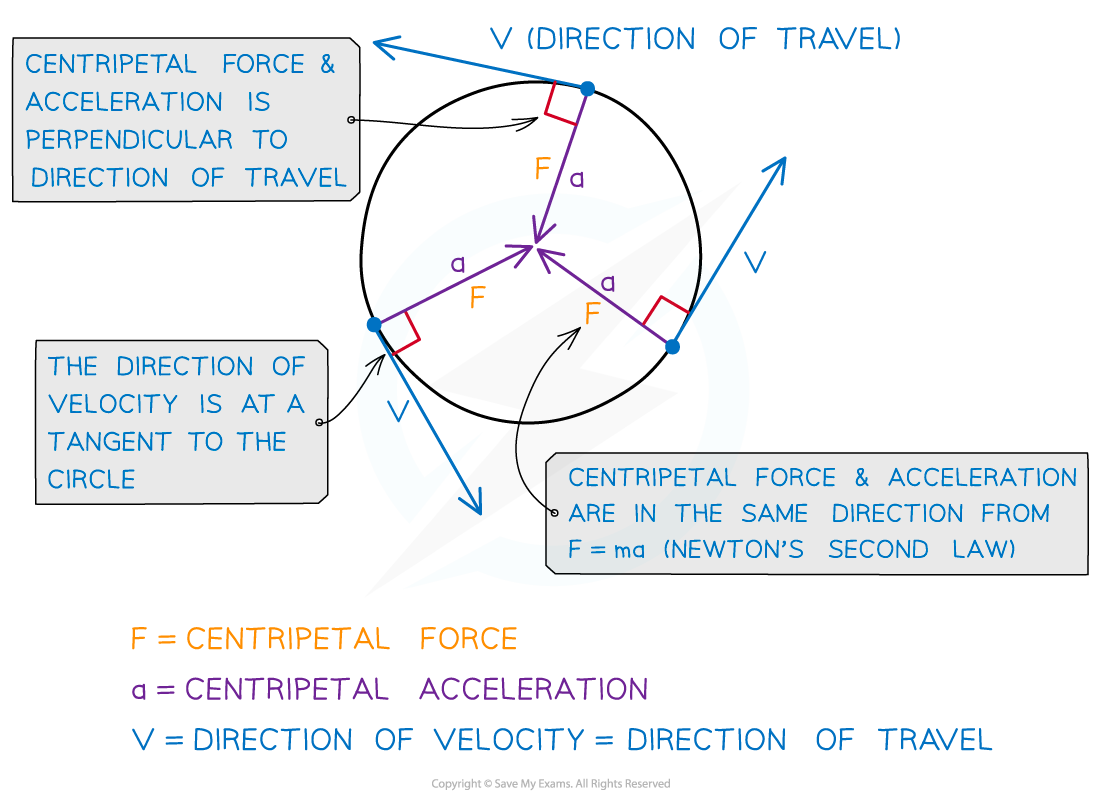- 翰林提供学术活动、国际课程、科研项目一站式留学背景提升服务!
- 400 888 0080
AQA A Level Physics复习笔记6.1.1 Circular Motion
Circular Motion
- Velocity and acceleration are both vector quantities
- An object in uniform circular motion has a constant linear speed
- However, it is continuously changing direction. Since velocity is the speed in a given direction, it, therefore, has a constantly changing velocity
- The object therefore must be accelerating
- This is because acceleration is defined as the rate of change of velocity
- This acceleration is called the centripetal acceleration and is perpendicular to the direction of the linear speed
- Centripetal means it acts towards the centre of the circular path

Centripetal force and acceleration are always directed towards the centre of the circle
- The centripetal acceleration is caused by a centripetal force of constant magnitude that also acts perpendicular to the direction of motion (towards the centre)
- This is a result of Newton's Second Law
- Therefore, the centripetal acceleration and force act in the same direction
Exam Tip
- The linear speed is sometimes referred to as the ‘tangential’ speed
- A tangent is a straight line which touches a circle or curve at exactly one point
- The key feature of a tangent of a circle is that it always acts perpendicular to its radius
- You can find out more in the A Level Maths revision notes on Tangents
转载自savemyexams

最新发布
© 2025. All Rights Reserved. 沪ICP备2023009024号-1









